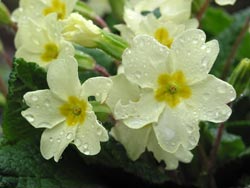
If you have a young woodland, the time will eventually come to think about introducing some wildflowers such as bluebells, ramsons or primrose.
Newly-planted woodland will allow plenty of light to reach the ground even at the height of summer. This will encourage everything but the wonderful woodland wildflowers that we would like to see. However, patience is the name of the game. As the canopy begins to fill out, less and less light will reach the woodland floor.
Once the woodland canopy reaches this stage, it will become much harder for light-loving plants to colonise. You may be lucky and find that some woodland wildflowers find their own way under your trees. More than likely though, you will need to give them a helping hand. It is illegal to dig up plants from the wild, so those grown from seed or planted as bulbs are the best solution.

Bluebell and primrose will flower in early spring before the trees come into leaf when there is more light available for them. The amount of light reaching the woodland floor at different stages of its life will also depend on the space (density) at which you planted the trees, the variety of species you plant and how many have survived to the stage where you want to plant your wildflowers.
As well as being a great benefit for the insects living in your habitat, try to visualise how good it will look. A carpet of bluebells amongst your trees in the spring will be beautiful to look at, or the extra splash of colour that the odd primrose or foxglove will add throughout your woodland.

